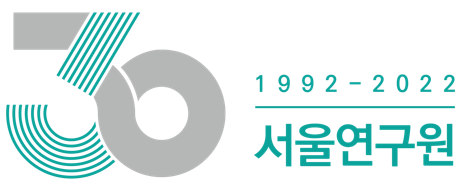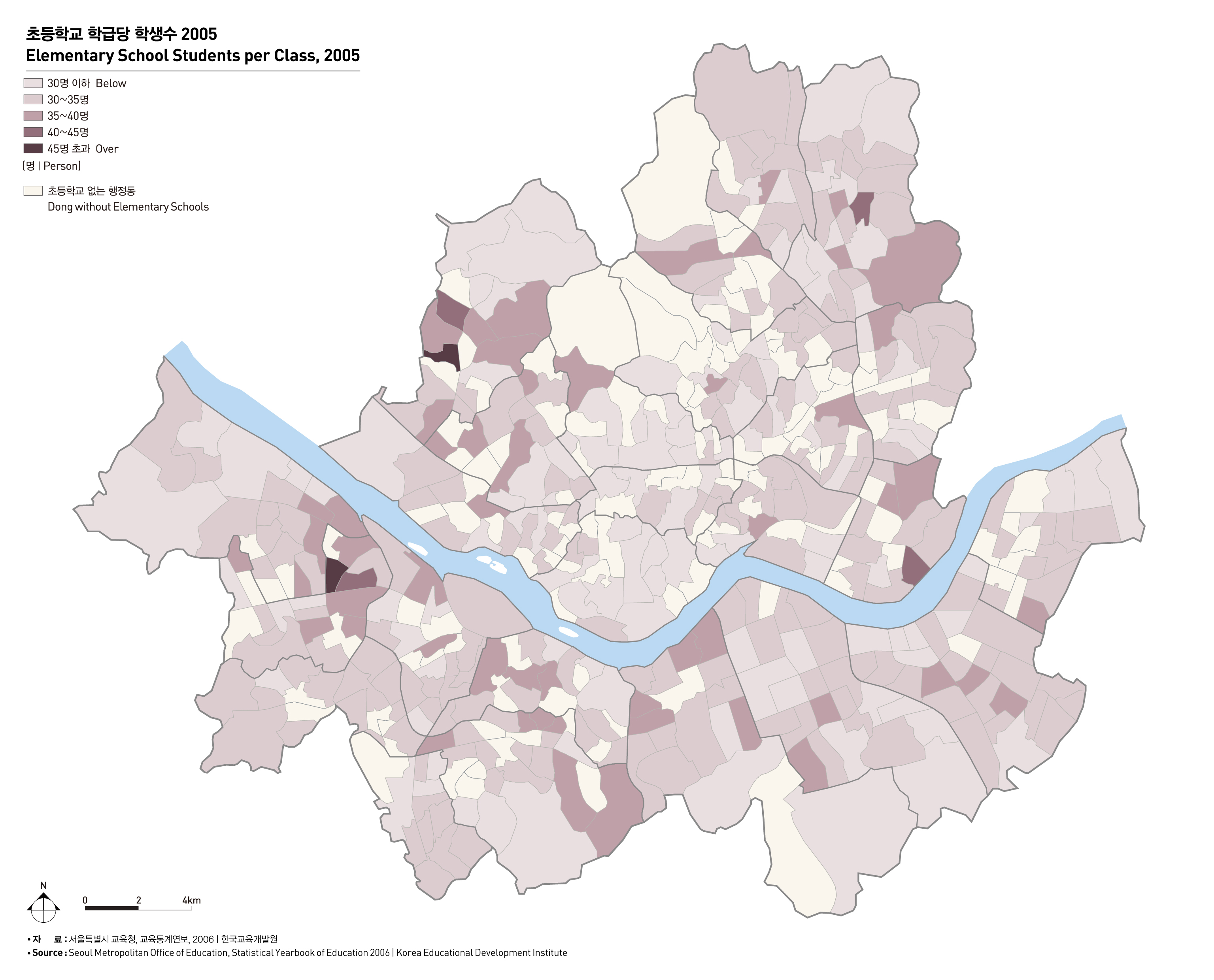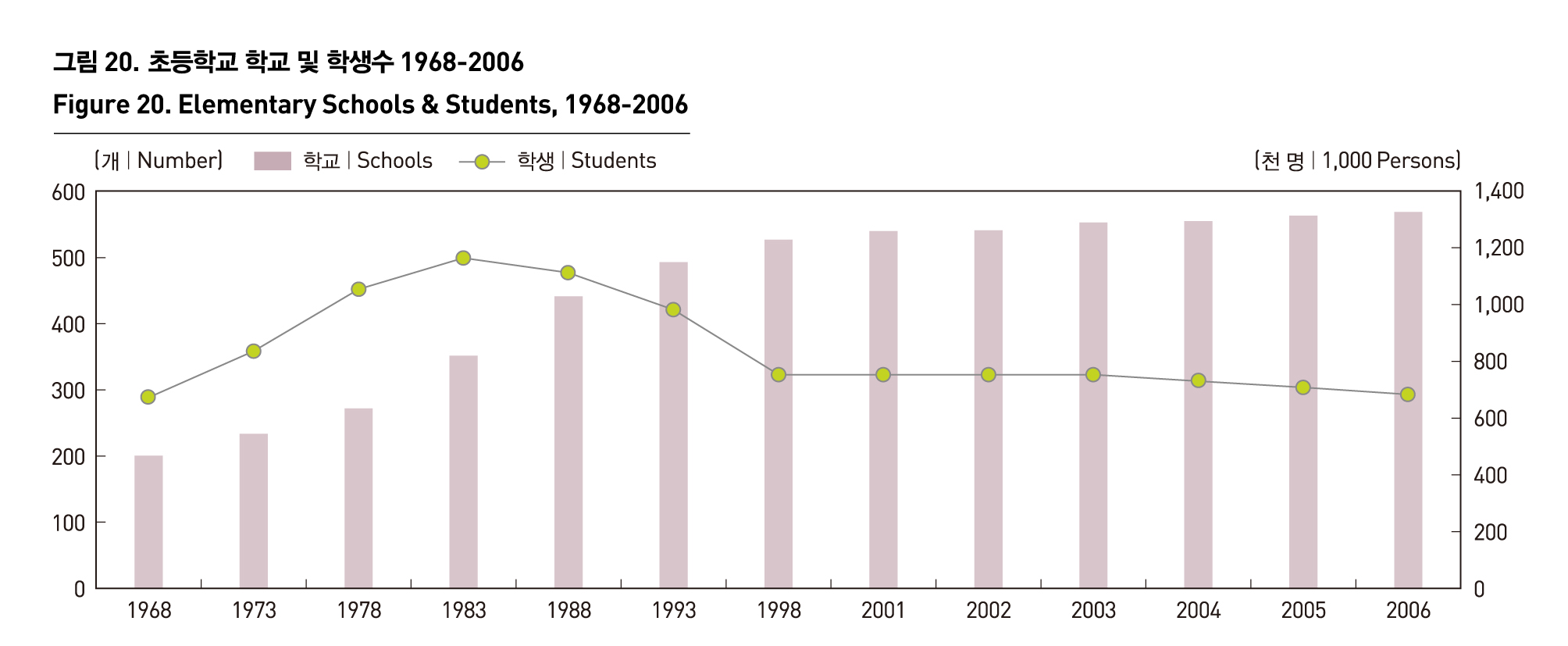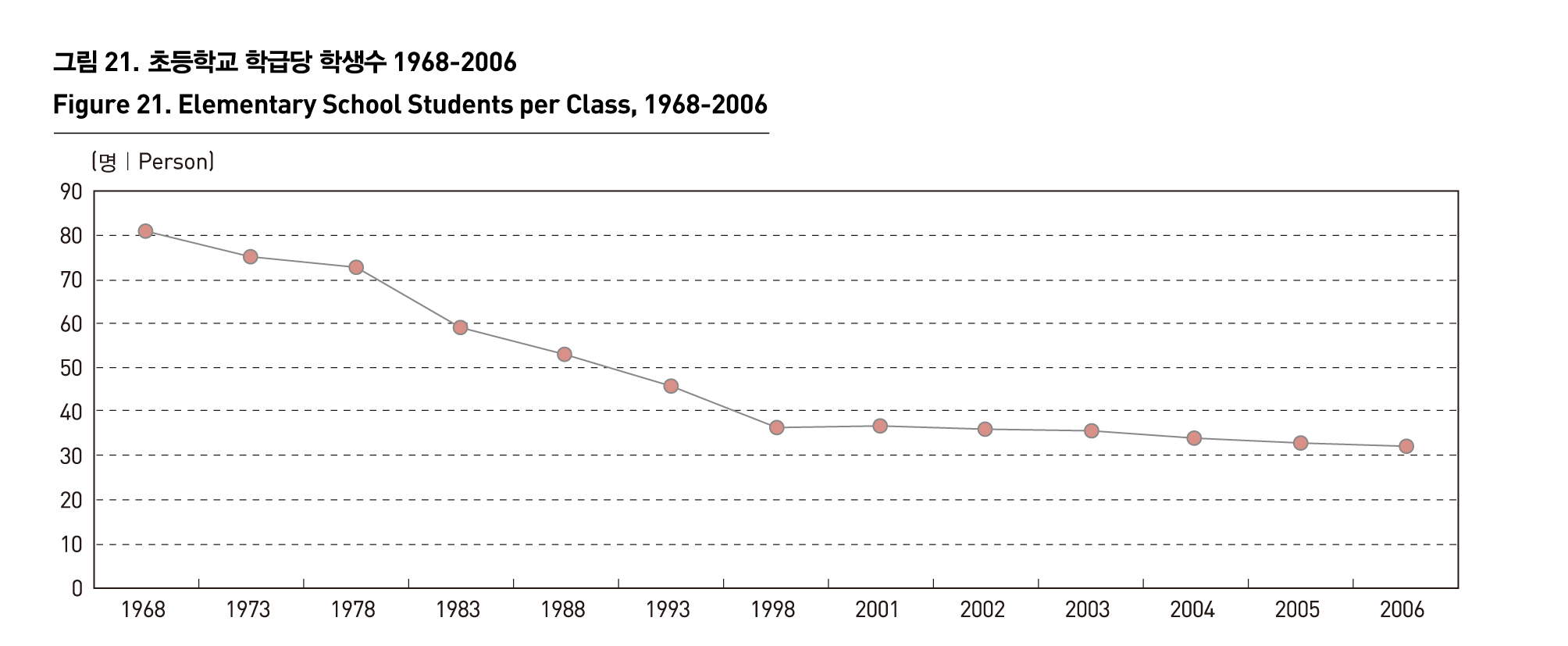-
교육 및 정보화 실태
초등학교
-
초등학교
2006년 현재 서울시의 초등학교 수는 568개로 1970년대부터 1990년대 초까지 급격하게 증가하였으나, 2000년대 들어서는 완만한 증가 추세를 보이고 있으며, 최근 1∼2년 사이에는 증가 폭이 매우 낮은 상태이다. 초등학교 학생 수는 1970년대 말부터 증가하기 시작하여 1980년대 말에 정점을 보이다가 1990년대부터 서서히 감소하여, 2006년 현재 689,169명이다. 학생 수 감소와 함께 학급당 학생 수 역시 1970년대 이후로 계속 감소하여 2002년 현재 학급당 학생수가 32.0명으로 감소하였다. 그러나 학급당 학생 수는 도심의 중구, 종로구, 용산구 등은 30명 이하인 반면에 재개발과 신시가지가 개발된 지역인 은평구, 양천구와 노원구, 관악구 등의 일부 동은 학급당 학생수가 35명 이상으로 지역별로 편차가 크다.
ELEMENTARY SCHOOL
There was a dramatic increase in the number of elementary schools in Seoul from 1970s to early 1990s, and has been gradual growth since 2000. The number of elementary schools slightly rose over the last couple of years, and there are 568 elementary schools in Seoul as of 2006. The number of elementary school students began to climb in late 1970s, peaked in late 1980s, has gradually dropped since 1990s, ultimately standing at 689,169 as of 2006. Combined with the trend, the number of students per class has been on the decrease since 1970s, eventually dwindling to 32.0 students in a class as of 2002. There are less than 30 students in a class in Jung-gu, Jongno-gu, and Yongsan-gu in downtown, and more than 35 students per class in redeveloped districts and regions with new streets, including Eunpyung-gu, Yangcheon-gu, Nowon-gu and Gwanak-gu. This indicates that there is a wide variation in the number of students by a region.
출처 : 서울특별시 교육청, 교육통계연보, 2006
한국교육개발원



